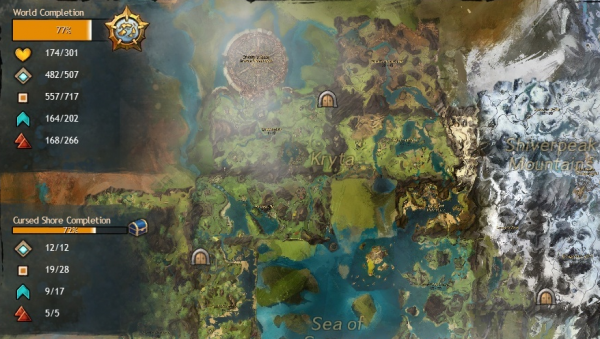
Mixed Media: Structure and Emptiness
April Tyack cracks open the boredom of conventional design.
The field of videogames as entertainment – in their creation and play – is more complex than ever. The glut of readily available tools (e.g., Unity, Twine) and at least one place to freely put the results (i.e., itch.io) has meant that more games are being made and released in recent years than any other time. People with the (temporal, financial, mental) resources to make games as leisure have the opportunity to explore more varied design practice than those funding commercial developers are prepared to support. Triple-A development budgets make possible the creation of even more complex and intricately-crafted experiences, and (although it’s a cliché) the size of this industry has grown to rival that of film. In short: this could easily be considered a golden age for the medium.
Despite this, I find myself spending less time playing videogames now than I did even five years ago – and only a minority of those games are blockbuster Triple-A releases. I could justify this shift in a number of ways: am I nostalgic for games that I didn’t even really enjoy at the time? Have I changed to an extent that none of this is for me anymore? Have standards of quality actually eroded?
Helpfully, I am not alone in my disinterest towards current Triple-A design. Janine Hawkins, for example, articulates the pleasantly surprising experience of travelling to Dragon Age: Inquisition’s Hissing Wastes and finding it as barren as its name would suggest. The relative absence of quest markers that would otherwise guide player action reflects an approach that prioritizes the feel of the space at the expense of risking negative player responses towards its minimal structure. (Consider Guild Wars 2’s quantified exploration, which assigns experience point rewards for reaching ‘points of interest’, ‘vistas’, and ‘waypoints’, as its contrast.) Hawkins celebrates the design of unadorned spaces, characterizing the obsessive saturation of objectives and achievements as “the rambling, nervous chatter of someone who can feel an awkward silence coming and will do absolutely anything to delay it.”

Guild Wars 2
This goes well beyond the design practices that typify recent Ubisoft games, and it feels strange to support Dragon Age: Inquisition on the basis of divergent design. BioWare is just as formulaic in their work as any other Triple-A studio (or their smaller-scale indie counterparts). Inquisition felt empty to me because I was once again playing as a Level 1 fighter/mage/thief who becomes a fated hero, in a medieval fantasy environment packed full of Crafting Components, who also manages a larger war effort by sending people on missions. I’ve come to a point, having essentially played games my entire life, where those structures — the organisation of narrative, opportunities to act, and learning, placed in service of maximising the possibility of player enjoyment — are so familiar that even their presence can feel like absence. I’m unable to ‘switch off’ as I become further integrated into the game. The game’s ‘nervous chatter’ has faded so far into the background that I can no longer hear it; I am on autopilot, but not absorbed. And this is surely a goal of the design.
Regardless, there’s something about this approach that makes me want to like it — for example, I keep trying to convince myself to pre-order Destiny 2, even knowing how sterile it will be. But having grown up playing games that are broadly similar to those on the market now, I can’t help but feel that most are so familiar that there’s no need to pay attention. Games are situated in the same Tolkienesque fantasy or post-apocalyptic wasteland or cyberpunk future. World of Warcraft has every variation on “fantasy forest zone” you can imagine; we do not need more. The behaviors that these games expect are similarly habitual. Mainstream videogames go to such great lengths to endear themselves through familiarity — look, here are all the signifiers of other games you enjoyed — that they’re marketed on the basis of having nothing new to offer.
At the same time, upcoming games are celebrated for their apparent complexity or challenge, and this is neither an accident nor a contradiction. These messages (communicated via trailers, press releases, crowdfunding updates, and so on) balance support and provocation; they reaffirm the value of players’ existing skills (and help them interpret new elements), while presenting the game as a suitably difficult environment to relearn and re-master these familiar behaviors. Pre-release materials are an extended tutorial.
The importance of learning support for commercial success was probably popularized by James Paul Gee, who considered entertainment videogames as ‘vehicles for learning’. His 2005 paper outlined what he identified as “good principles of learning” applied by designers to allow them to make increasingly lengthy, complex, and (as a result) fun games. Gee conflates the support of player learning with a singular idea of good game design: “Games that people can’t learn to play and from which they don’t get the enjoyment of learning won’t sell.” The approaches he identified for structuring player action remain prevalent in game design today.

No Man’s Sky
Among others, Gee highlighted Well-Ordered Problems (“early problems are designed to lead players to form good guesses about how to proceed … later on in the game”), Pleasantly Frustrating challenges (“good games adjust challenges and give feedback in such a way that different players feel the game is challenging but doable and that their effort is paying off”), and Cycles of Expertise (“good games create and support the cycle of expertise, with cycles of extended practice, tests of mastery of that practice, then a new challenge, and then new extended practice. This is, in fact, part of what constitutes good pacing in a game” (emphasis added)). In other words, game events are arranged to give players the best chance of feeling smart, rewarded, optimally challenged, and so on.
I don’t mean to suggest that individual developers are at fault for the lack of change in this approach. The industry is well-established in its role as meat grinder. Instead, I want to highlight that failing to support long-term careers in game development, and continuing to adopt an iterative, unselfconscious design practice will result in games that are less interesting to an experienced audience. With enough exposure, the human tendency towards pattern recognition that lets game design lean on structures of learning support is itself a threat to enjoyment. Videogames themselves are learned. A convergence of design practice, caused by a lack of long-term career support, results in games that offer less to learn and therefore fail by their own measure.
The value of learning in-game skills, or demonstrating mastery, can be supported by feedback that goes beyond a relevant response to player behaviour (e.g., Mario visibly jumping in response to a button press); that is, when feedback is used as a reward. This is exemplified in so-called “juicy” feedback — described by Sebastian Deterding as “varied, unexpectedly excessive sensual positive feedback on small user actions and achievements.” Juicy feedback is a key component of gamification (or the rebranded “gameful design,” if you prefer) that aims to “instil a sense of competence even without a big challenge to overcome,” although its popular use goes back at least to the audiovisual reward accompanying each level-up in World of Warcraft. Juicy feedback is used in a number of other, highly profitable games (e.g., Candy Crush, Super Smash Bros). But this is also only possible as a short-term strategy; “unexpectedly excessive” feedback cannot continue to affect players as long as it remains part of common design practice.
Games with divergent structures are interesting and worth playing partly because they disregard these forms to varying degrees. Early Sonic games have levels that are learned by rote. Uriel’s Chasm alternates amateur video with a series of disconnected shoot ‘em up segments. Even The Witness differs by centring players’ internal skills: solving puzzles is both the means to progress and its primary reward. Games that disregard in-game recognition of challenge (e.g., walking simulators) evade the issue entirely by placing all responsibility onto players to feel rewarded in some way.
If more experimental videogames are derided by players and their popular representatives (see last week’s HellBlade discourse), it’s because they are seen to challenge the fundamental value of videogame play, implied in Gee’s writing: progression. Commercially successful videogames support players in their desire to struggle towards some recognisably attainable goal, and they make that struggle satisfying. The industry’s disinterest in deviating from this core value, as part of a committment to ‘player-centred design’, has in turn helped cultivate an audience with aggressively narrow taste. These players are in it for the long term; everyone else burns out.
The Triple-A videogame industry is bound to its audience, and attempts to improve developers’ working conditions are more difficult without corresponding shifts in audience taste. Admittedly, the current state of affairs makes that a bleak prospect, but this also underscores the value of (often unpaid and thankless) work involved in creating or curating atypical videogames. The relatively tight connection between the commercial industry and its players shows no signs of ending. This suggests to me that popular tastes themselves must change. Maybe then we’d be looking at something approaching a golden age.
April Tyack (@stillisles) is an Australian PhD student researching videogames and wellbeing, who otherwise spends a lot of time writing papers on unrelated topics, and should probably get around to learning Unity. Her previous writing can be found at stillisles.wordpress.com.
